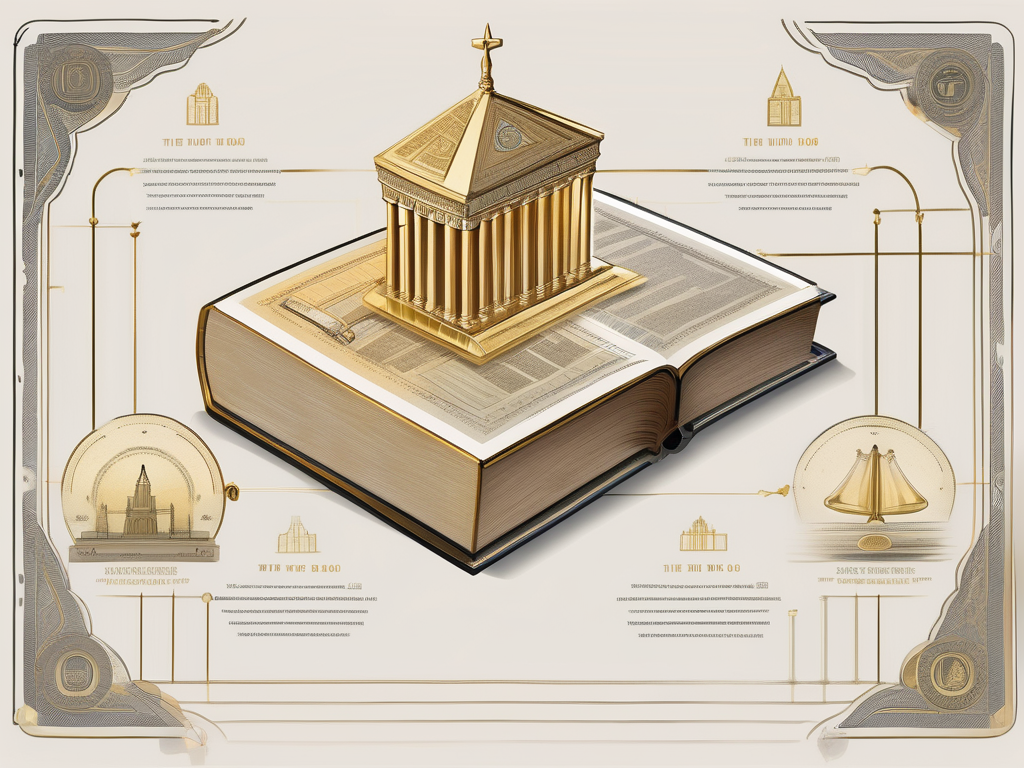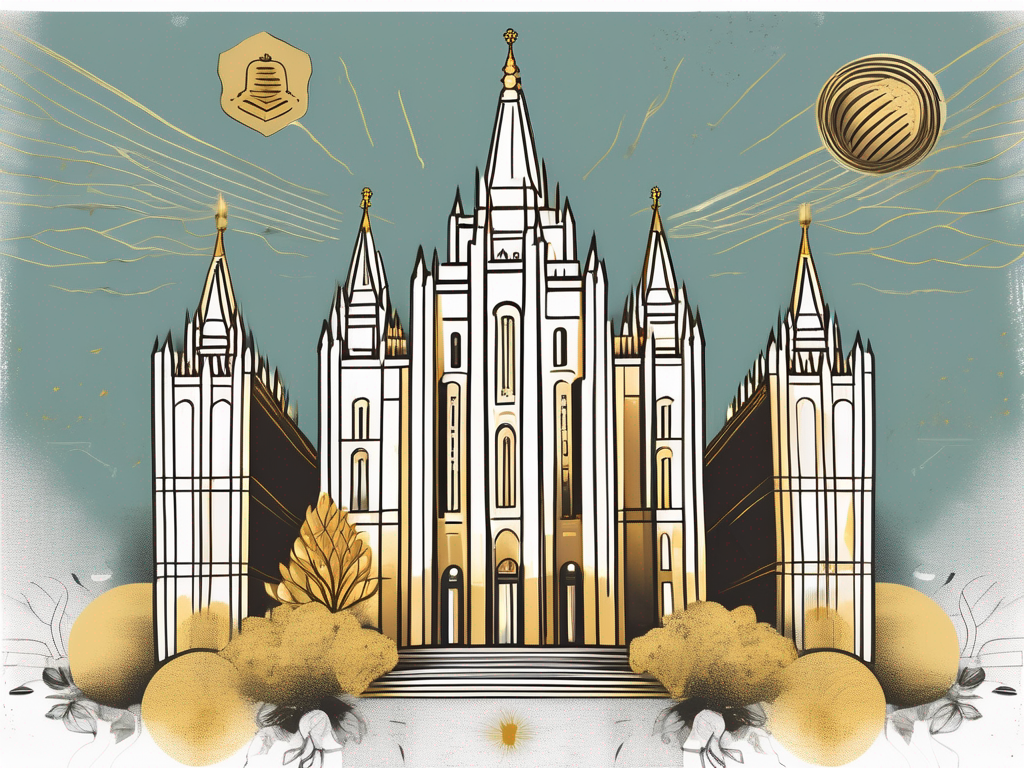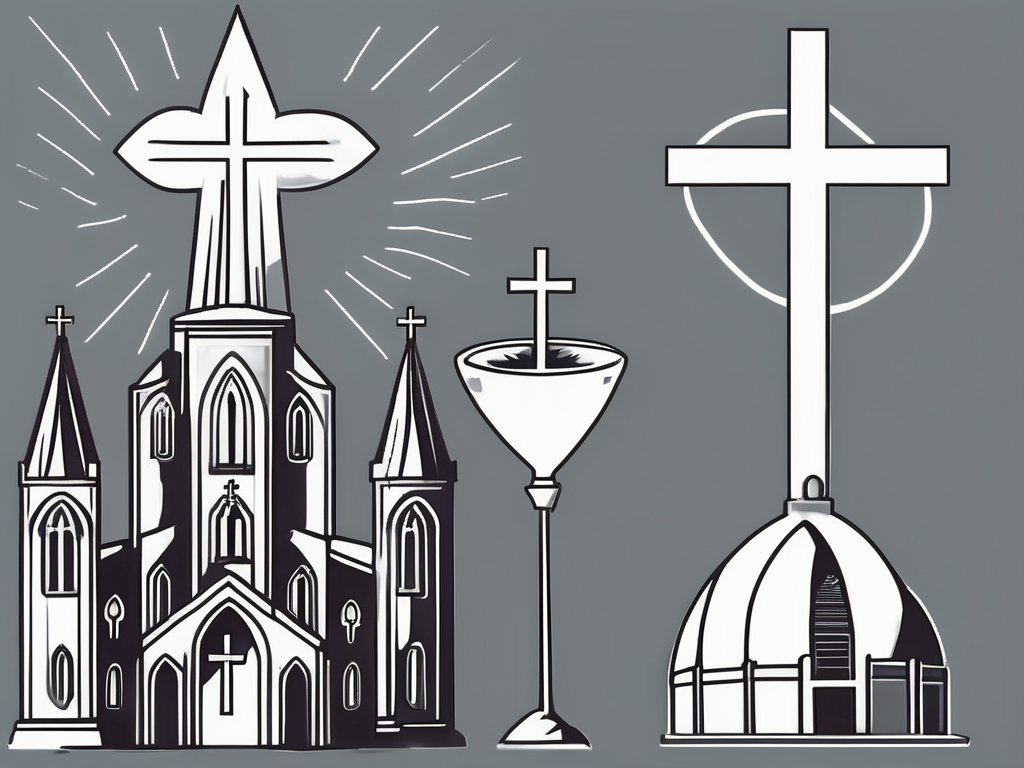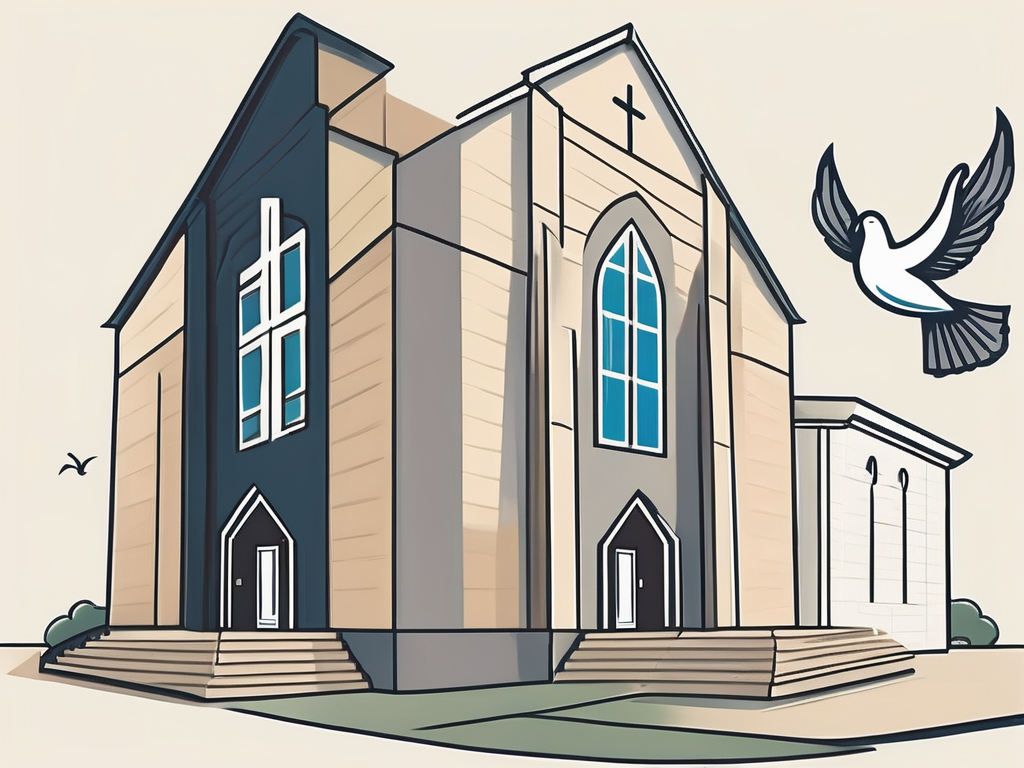Are you curious about the differences between the Seventh Day Adventist and Mormon faiths? In this article, we will delve into their origins, core beliefs, worship styles, leadership structures, and community lifestyles. By comparing these two religions, we aim to shed light on their similarities and differences. So let’s dive right in!
Understanding the Origins
The origins of Seventh Day Adventism and Mormonism can be traced back to the early 19th century, a time of great religious fervor and spiritual exploration in America.
The Birth of Seventh Day Adventism
Seventh Day Adventism emerged as a distinct religious movement in the aftermath of the Great Disappointment of 1844. Baptist preacher William Miller, convinced by his interpretation of biblical prophecies, predicted that Jesus Christ would return to Earth on October 22, 1844. However, when this prophecy failed to materialize, Miller’s followers were left disillusioned.
Despite the disappointment, the movement did not fade away. Instead, it underwent a transformation and reevaluation of beliefs. Out of this process, the Seventh Day Adventist Church was officially organized in 1863. The church drew inspiration from the teachings of Ellen G. White, a prominent figure in the movement who is considered a prophetess.
Adventists place a strong emphasis on studying the Bible and interpreting it through the lens of their unique doctrines. They observe the Sabbath on Saturday, a practice that sets them apart from other Christian denominations. Additionally, Adventists prioritize healthy living, promoting vegetarianism, abstinence from alcohol and tobacco, and regular exercise as part of their religious lifestyle.
The Emergence of Mormonism
In the early 19th century, Joseph Smith, a young farmer from New York, claimed to have experienced a series of divine revelations. According to Smith, an angel named Moroni directed him to a set of golden plates buried in a hillside, which he translated into what is now known as the Book of Mormon.
Smith’s revelations formed the basis of Mormonism, officially known as The Church of Jesus Christ of Latter-day Saints (LDS). The new religious movement emphasized the restoration of the true gospel and claimed to be a continuation of the early Christian church as established by Jesus Christ.
As the movement grew, Smith and his followers faced persecution and hostility in various locations. In the 1840s, they embarked on a westward migration, eventually settling in the Utah Territory, where they established their headquarters. Today, Salt Lake City remains the center of Mormonism.
Mormonism places a strong emphasis on family values and the importance of eternal relationships. Mormons believe in the eternal nature of the family unit and prioritize marriage and child-rearing. Personal revelation is also a fundamental aspect of Mormonism, with individuals encouraged to seek guidance from God through prayer and spiritual experiences.
Furthermore, missionary work plays a significant role in Mormonism. Young men and women are encouraged to dedicate a portion of their lives to spreading the teachings of the church, often embarking on two-year missions to various parts of the world.
In conclusion, the origins of Seventh Day Adventism and Mormonism are rooted in the religious fervor and spiritual exploration of the early 19th century. Both movements have distinct beliefs and practices that continue to shape the lives of their followers today.
Core Beliefs and Teachings
When exploring the core beliefs and teachings of religious groups, it is fascinating to delve into the fundamental doctrines that shape their faith and guide their practices. In this regard, both Seventh Day Adventists and Mormons have distinct sets of beliefs that define their respective religious identities.
Fundamental Doctrines of Seventh Day Adventists
Seventh Day Adventists, known for their commitment to health and spirituality, embrace a comprehensive belief system that encompasses various aspects of life. Central to their faith is the belief in the Trinity, which emphasizes the existence of God as three distinct persons: the Father, the Son (Jesus Christ), and the Holy Spirit.
Another fundamental doctrine cherished by Seventh Day Adventists is the anticipation of the second coming of Christ. They firmly believe in the imminent return of Jesus, which fuels their dedication to spreading the message of salvation and living a righteous life.
Seventh Day Adventists are renowned for their emphasis on a healthy lifestyle. They advocate for the avoidance of harmful substances such as smoking, alcohol, and caffeine. Moreover, they promote a plant-based diet, recognizing the profound impact of nutrition on physical and spiritual well-being.
Furthermore, Seventh Day Adventists hold the Sabbath in high regard. They believe that the Sabbath, a day of rest and worship, should be observed from Friday evening to Saturday evening. This sacred day serves as a time for spiritual rejuvenation, communal worship, and reflection.
It is worth noting that Seventh Day Adventists adopt a holistic approach to health, acknowledging the intricate connection between the mind, body, and spirit. They believe that true wellness encompasses not only physical health but also mental and spiritual well-being.
Key Principles of Mormonism
Mormonism, also known as The Church of Jesus Christ of Latter-day Saints, possesses a rich tapestry of beliefs that shape the lives of its adherents. At the core of Mormon doctrine is the belief in God the Father, Jesus Christ, and the Holy Ghost as distinct beings. They view the Godhead as a divine council, united in purpose and working harmoniously to guide humanity.
One of the distinctive teachings of Mormonism is the belief in eternal families. Mormons firmly believe that families can be together forever, even beyond mortal life. This principle brings immense comfort and hope, reinforcing the significance of strong familial bonds and nurturing relationships.
In addition to the Bible, Mormons consider three other texts as scripture: the Book of Mormon, Doctrine and Covenants, and Pearl of Great Price. These sacred writings provide additional insights into God’s plan for humanity and serve as a source of guidance and inspiration.
Mormons observe the Sabbath on Sunday, dedicating this day to worship, rest, and spiritual growth. They gather in congregations to partake in sacraments, engage in prayer and scripture study, and strengthen their connections with fellow believers.
Temple worship holds great importance in Mormonism. Within these sacred spaces, Mormons participate in various ordinances and ceremonies that are believed to bind families together for eternity. Additionally, Mormons place significant emphasis on genealogy, as they believe in the importance of tracing one’s ancestry and performing sacred rituals on behalf of deceased ancestors.
By understanding the core beliefs and teachings of religious groups like Seventh Day Adventists and Mormons, we gain insight into the values and principles that shape their communities. These beliefs serve as guiding lights, providing a sense of purpose, identity, and spiritual fulfillment to their followers.
Worship and Practices
Worship styles and traditions vary among different religious groups, each with its own unique practices and beliefs. In this section, we will explore the worship styles of two prominent religious denominations: Seventh Day Adventists and Mormons.
Seventh Day Adventist Worship Style
Seventh Day Adventist worship services are characterized by a sense of reverence and devotion. The worship experience typically begins with the congregation singing hymns, which are carefully selected to reflect the Adventist beliefs and values. The lyrics often emphasize the importance of faith, hope, and the second coming of Jesus Christ.
Prayer plays a central role in Adventist worship, as it is seen as a means of connecting with God and seeking His guidance. During the service, individuals are encouraged to share their personal prayer requests, fostering a sense of community and support among the congregation.
The reading of Scripture is a fundamental part of the worship service. Adventists believe in the authority and inspiration of the Bible, and the sermons delivered during the service focus on biblical teachings, health, and personal spiritual growth. The messages aim to provide practical guidance for living a righteous and fulfilling life.
In addition to singing hymns, prayer, and the reading of Scripture, some Adventist churches may also engage in foot washing ceremonies. This practice, derived from Jesus’ act of washing the feet of His disciples, is seen as a symbol of humility and service. It serves as a reminder to Adventists of the importance of selflessness and the call to serve others.
Adventists value simplicity in their worship, focusing on the message rather than extravagant rituals. The emphasis is on the personal experience of each individual and their relationship with God. They encourage active participation from the congregation, with an emphasis on personal involvement and community engagement. Adventist worship services provide a space for individuals to connect with God, find spiritual nourishment, and build meaningful relationships within the faith community.
Mormon Worship Traditions
Mormon worship services, known as Sacrament Meetings, are characterized by a sense of reverence and devotion. The main focus of these meetings is the partaking of the sacrament, which is similar to the Christian practice of communion. The sacrament consists of bread and water, representing the body and blood of Jesus Christ, and serves as a reminder of His sacrifice and the covenant made with Him.
Sacrament Meetings also include singing hymns, which are an integral part of the Mormon worship experience. The hymns, carefully selected from the Mormon hymnbook, reflect the beliefs, values, and teachings of the Church. They often emphasize themes such as faith, obedience, and the eternal nature of families.
In addition to the main Sacrament Meeting, Mormons have various classes and activities throughout the week for different age groups. These classes provide opportunities for members to deepen their understanding of the scriptures, strengthen their faith, and build relationships with fellow believers.
Mormons have temples, which are considered sacred spaces for worship, instruction, and performing special ordinances. These ordinances include baptisms for the dead, which are seen as a way to provide opportunities for deceased individuals to accept the gospel and receive the blessings of salvation. The temple ceremonies, known as endowments, focus on the eternal nature of families and individual spiritual growth.
Overall, Mormon worship traditions emphasize the importance of family, community, and personal spiritual development. The worship experience provides a space for individuals to connect with God, strengthen their faith, and find guidance and support from their fellow believers.
Leadership and Church Structure
Organizational Structure of Seventh Day Adventists
The Seventh Day Adventist Church operates under a hierarchical system. It is divided into conferences, unions, and divisions, with each level providing support and guidance to its member churches and institutions. The ultimate authority resides in the General Conference, which sets policies and provides spiritual leadership.
Ordained ministers lead the Adventist churches, while elders and local leaders contribute to the functioning of the congregation. Adventists believe in equal rights and responsibilities for men and women, allowing women to serve in pastoral positions and contribute to leadership roles.
Hierarchy in the Mormon Church
The Mormon Church has a centralized leadership structure, with a president who is considered a prophet, seer, and revelator. This position is believed to be divinely appointed and is seen as a channel for ongoing revelation.
Mormon congregations are led by a bishop, with additional leaders serving in various auxiliaries and organizations. It is worth noting that while men hold the majority of leadership positions within the Mormon Church, women also play influential roles in different spheres, such as the Relief Society, Young Women’s, and Primary organizations.
Community and Lifestyle
The Seventh Day Adventist Community
The Adventist community is known for its emphasis on health, education, and community outreach. Adventists prioritize healthy living, including a plant-based diet, exercise, and abstaining from harmful substances. They run numerous educational institutions, including universities and hospitals.
Adventists are also actively involved in humanitarian work, disaster relief efforts, and promoting social justice. The sense of community is strong, with regular gatherings, potlucks, and fellowship activities. They value the Sabbath as a time for rest, worship, and spending time with family and friends.
The Mormon Way of Life
Mormons have a tight-knit community that places a strong emphasis on family connections. They prioritize spending quality time together and place great importance on marriage and parenthood.
The Mormon lifestyle involves adhering to a code of moral conduct, which includes abstaining from alcohol, tobacco, and premarital sex. They engage in missionary work around the world, seeking to spread their beliefs and reach out to others. Mormons also have a strong tradition of service within their communities and a focus on self-reliance.
In conclusion, while the Seventh Day Adventist and Mormon faiths share some similarities, such as their belief in Jesus Christ, they also have distinct differences in terms of their origins, core beliefs, worship style, leadership structure, and community lifestyles. Understanding these similarities and differences can help foster dialogue and promote mutual respect between followers of these two unique religions.












